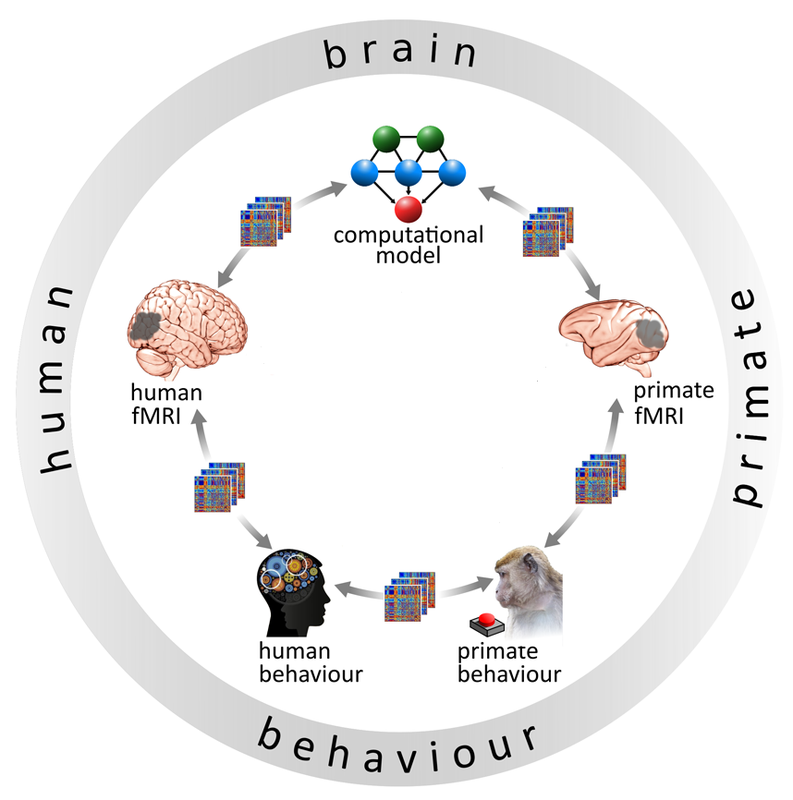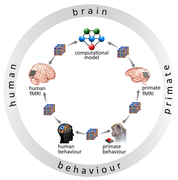Laboratorio di neuroscienze visive e affettive
Vision and Affective Neuroscience Lab
Componenti
- Celeghin Alessia (Coordinatore)
- Tamietto Marco (Componente)
- Dal Monte Olga (Componente)
- Diano Matteo (Componente)
- Lanzilotto Marco (Componente)
- Villa Maria-Chiara (Dottorando)
- Mendez Guerrero Carlos Andres (PostDoc)
- Baumann Simon (PostDoc)
- Camassa Nahi Ylenia (Componente)
- Panormita Matteo (Componente)
- Ocak Brian (Componente)
Contatti

Settore ERC
Attività
Main Research Interests and New Research lines
Visual awareness emerges from mutual interactions amidst interconnected brain areas in the visual system and beyond. But which information can be processed and used proficiently to guide actions when visual awareness is lacking following damage to the visual cortex? Which neural plasticity is possible, and which mechanisms govern recovery of functions after visual cortex damage in the adulthood? Our Lab addresses these questions combining psychophysics, psychophysiological measures, functional (fMRI), and structural neuroimaging techniques (DTI and tractography) in patients with focal brain damage to the visual system and “blindsight”. Owing to our collaboration with the group of Alain Ptito, we also study patients with hemispherectomy to gain causal insights on the contribution of subcortical structures on vision in the absence of the cortex. How does our brain recognize emotions and how it instantiates appropriate reactions? Are emotions processed nonconsciously and nevertheless influence our intentional and conscious actions? What is the relation between emotion, awareness and attention? Our Lab approaches these themes from the perspective of affective neuroscience and neuropsychology. We study emotion perception with and without awareness and/or attention in both healthy subjects and neuropsychological patients with blindsight and hemispatial neglect. We study recognition of facial as well as bodily expressions of emotions. Peripheral changes characteristics of emotions are tracked (pupil dilation, spontaneous facial reactions) and related to functional changes in brain activity and connectivity. Our behaviour is eminently shaped by social interactions and by our ability to in interpret emotional and social signals embedded in everyday information-rich contexts. We are committed to understand how social factors and stereotypes, such as race or gender biases, modulate naturalistic emotion. In the context of an evolutionary perspective of emotions, we are also investigating the brain capacity to recognize and differentiate facial expressions of basic (e.g., fear, anger, joy) as compared to social emotion (e.g., arrogance, guilt, embarrassment). Neuroimaging is integrated with virtual reality technologies that can bring daily life realism into the laboratory setting Exploring how the brain process the visual information and build the visual scene is one the main topics of interest in cognitive neuroscience. We aim at exploring a way in which we could translate non-conscious visual abilities into conscious ones exploiting humans and non-human primates’ data collections. By capitalizing on different laboratories expertise and approaches we will be able to combine diverse methodological tools and techniques in the attempt to lift our understanding on how a given brain structure translates visual properties into responses associated with awareness. Homonymous visual field loss is a common consequence of stroke and traumatic brain injury. It is associated with an adverse functional prognosis and has implications on daily activities such as driving, reading, and navigation. In chronic disease (beyond 6 months) recovery is unlikely and the rehabilitative approaches generally are unsuccessful. Moreover, a proper and customized protocol to intervene in these patients is lacking. The experimental rehabilitation proposed until now has three mains forms of intervention: 1) expand or relocate the affected visual field; 2) builds upon compensatory strategies to improve explorative behaviour; 3) improve visual processing within the damaged field itself. However, the integration of multiple methodologies and approaches is encouraging, and the goal of this lab is to update the research in this field and at the same time, offer a patient-centered rehabilitation proposal. A comprehensive map of direct and indirect neural connections in the visual and emotional brain represents an intriguing and UpToDate goal of the neuroscience. The neuroimaging techniques matured by the members of the laboratory are intended to examine the functional, anatomical, correlational, and causal properties of the visuo -affective system with particular attention to the subcortico-cortical interactions. The computational perspective is intended to simulate the contribution of specific structures, like the Superior Colliculus, in the process of visual stimuli.
- Bridge Holly, Oxford University, UK
- de Gelder Beatrice, Maastricht University, NL
- Leopold David, NIH, US
- Wim Vanduffel, KU Leuven, BE
- Isa Tadashi, University of Tokyo, JPN
- Ptito Alain, McGill University, CAN
- Palagi Elisabetta, University of Pisa, ITA
- Norscia Ivan, University of Torino, ITA
- Bertini Caterina, University of Bologna, ITA
- Bonini Luca, University of Parma, ITA
- Brain & Behaviour Research Foundation “The neural bases of facial mimicry in Macaque brain” to M. Lanzilotto
- ERC Consolidator Grant “LIGHTUP – Turning the cortically blind brain to see: From neural computations to system dynamics generating visual awareness in humans and monkeys” (prot. 772953) to M. Tamietto
- PRIN, “From brain dynamics to restoration of visual awareness after damage to the visual cortex.” (2017TBA4KS) to M. Tamietto
- Fondazione CRT, "I difetti del campo visivo e l'idoneità alla guida" to A. Celeghin
- Campimeter, HFA 840
- Colorimeter
- Goggles with integrated eyetracker
- Eyelink eyetracker
- I-motion
- Mirror stereoscope
- Behavioural testing PCs
- Neuropsychological tests
- TMS
- tDCS
- fMRI
Prodotti della ricerca
Recent publications on undertaken topics of the research group
Georgy L, Lewis JD, Bezgin G, Diano M, Celeghin A, Evans AC, Tamietto M, Ptito A. (2020) Changes in peri-calcarine cortical thickness in blindsight. Neuropsychologia 143 107463 [DOI PMID] Danckert J , Tamietto M , Rossetti Y (2019) Celeghin A, Bagnis A, Diano M, Mendez CA, Costa T, Tamietto M. (2019) Functional neuroanatomy of blindsight revealed by activation likelihood estimation meta-analysis. Neuropsychologia 128 109-118 [DOI PMID] Burra N, Hervais-Adelman A, Celeghin A, de Gelder B, Pegna AJ. (2019) Affective blindsight relies on low spatial frequencies. Neuropsychologia 128 44-49 [DOI PMID] Tamietto M, Leopold DA. (2018) Visual Cortex: The Eccentric Area Prostriata in the Human Brain. Current biology : CB 28(1) R17-R19 [DOI PMID] Celeghin A, Diano M, de Gelder B, Weiskrantz L, Marzi CA, Tamietto M. (2017) Intact hemisphere and corpus callosum compensate for visuomotor functions after early visual cortex damage. Proceedings of the National Academy of Sciences of the United States of America 114(48) E10475-E10483 [DOI PMID] Celeghin A, Galetto V, Tamietto M, Zettin M. (2019) Emotion Recognition in Low-Spatial Frequencies Is Partly Preserved following Traumatic Brain Injury. BioMed research international 2019 9562935 [DOI PMID] Celeghin A, Diano M, Bagnis A, Viola M, Tamietto M. (2017) Basic Emotions in Human Neuroscience: Neuroimaging and Beyond. Frontiers in psychology 8 1432 [DOI PMID] Diano M, Tamietto M, Celeghin A, Weiskrantz L, Tatu MK, Bagnis A, Duca S, Geminiani G, Cauda F, Costa T. (2017) Dynamic Changes in Amygdala Psychophysiological Connectivity Reveal Distinct Neural Networks for Facial Expressions of Basic Emotions. Scientific reports 7 45260 [DOI PMID] Diano, Matteo, Celeghin, Alessia, Bagnis, Arianna, Tamietto, Marco (2017) Diano M, Celeghin A, Bagnis A, Tamietto M. (2016) Amygdala Response to Emotional Stimuli without Awareness: Facts and Interpretations. Frontiers in psychology 7 2029 [DOI PMID] Dal Monte O, Chu CCJ, Fagan NA, Chang SWC. (2020) Specialized medial prefrontal-amygdala coordination in other-regarding decision preference. Nature neuroscience 23(4) 565-574 [DOI PMID] Fan S, Weinberg-Wolf H, Piva M, Dal Monte O, Chang SWC. (2020) Combinatorial Oxytocin Neuropharmacology in Social Cognition. Trends in cognitive sciences 24(1) 8-12 [DOI PMID] Bagnis A, Celeghin A, Diano M, Mendez CA, Spadaro G, Mosso CO, Avenanti A, Tamietto M. (2020) Functional neuroanatomy of racial categorization from visual perception: A meta-analytic study. NeuroImage 217 116939 [DOI PMID] Bagnis A, Celeghin A, Mosso CO, Tamietto M. (2019) Toward an integrative science of social vision in intergroup bias. Neuroscience and biobehavioral reviews 102 318-326 [DOI PMID] Dal Monte O, Fan S, Chang SWC. (2018) Social subjective value in the primate midbrain. Nature neuroscience 21(10) 1298-1299 [DOI PMID] Palagi E, Celeghin A, Tamietto M, Winkielman P, Norscia I. (2021) Disentangling attentional and affective contribution to contagious yawning. Neuroscience and biobehavioral reviews [DOI PMID] Albertini D, Lanzilotto M, Maranesi M, Bonini L. (2021) Largely shared neural codes for biological and nonbiological observed movements but not for executed actions in monkey premotor areas. Journal of neurophysiology 126(3) 906-912 [DOI PMID] Ferroni CG, Albertini D, Lanzilotto M, Livi A, Maranesi M, Bonini L. (2021) Local and system mechanisms for action execution and observation in parietal and premotor cortices. Current biology : CB 31(13) 2819-2830.e4 [DOI PMID] Palagi E, Celeghin A, Tamietto M, Winkielman P, Norscia I. (2020) The neuroethology of spontaneous mimicry and emotional contagion in human and non-human animals. Neuroscience and biobehavioral reviews 111 149-165 [DOI PMID] Paul ES, Sher S, Tamietto M, Winkielman P, Mendl MT. (2020) Towards a comparative science of emotion: Affect and consciousness in humans and animals. Neuroscience and biobehavioral reviews 108 749-770 [DOI PMID] Lanzilotto M, Maranesi M, Livi A, Ferroni CG, Orban GA, Bonini L. (2020) Stable readout of observed actions from format-dependent activity of monkey's anterior intraparietal neurons. Proceedings of the National Academy of Sciences of the United States of America 117(28) 16596-16605 [DOI PMID]
Definition: Blindsight. https://iris.unito.it/handle/2318/1727622
Human Amygdala in Sensory and Attentional Unawareness: Neural Pathways and Behavioural Outcomes. https://iris.unito.it/handle/2318/1652881





